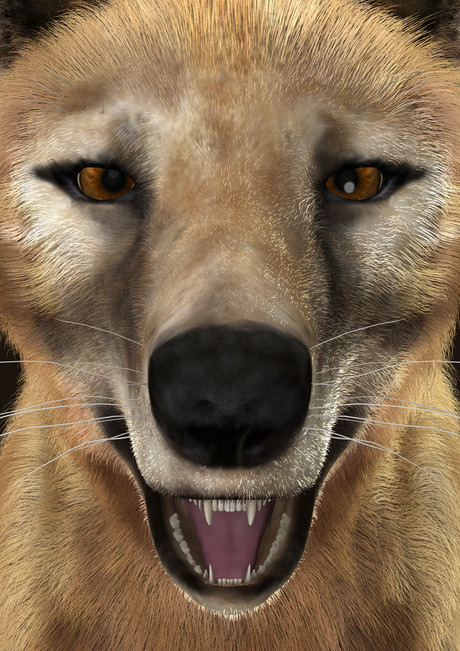SA Water scientists use DNA in Tassie tiger search

Scientists at SA Water’s AWQC laboratories have integrated high-throughput DNA sequencing technology to their water quality analysis services and have been applying it to searches for shy platypus, and the presumed-extinct thylacine.
A business unit of 2018 Australian Digital Utility of the Year SA Water, AWQC provides specialist water and sewerage expertise including sampling, analysis, advice and research to other Australian and international water companies.
Two new pieces of equipment in the AWQC laboratories, the ION Chef and the ION S5, create DNA chips and unique barcodes for organisms found in water samples, to provide detailed and reliable information.
Talking about the technology he will showcase at the Ozwater’18 conference in Brisbane this week, AWQC Manager of Life Sciences Dr Thorsten Mosisch said similar technology is used by hospitals across the country for cancer and genetics research.
“Our scientists are the first to apply it in the water industry and now with a simple one-litre sample they can determine exactly what organisms, including vertebrates, native fish and bacteria have been in contact with that water sample,” he said.
“DNA sequencing reduces the time required to perform the analysis of water samples for organisms present and provides far greater accuracy than traditional methods.
“Importantly, the benefits can be realised without the need for any traditional microscopy, culture techniques or complex and time-consuming field sampling.
“This molecular-based analytical technique has significant implications for public health, research, conservation efforts, and optimising processes and conditions within water and wastewater treatment plants.”
DNA extraction, purification, fragmentation and amplification are performed using the ion torrent ION Chef.
The amplified fragments tether to a small bead, which sits in one of millions of wells on a semiconducting chip, which is placed in the ION GeneStudio S5 to read the DNA using Next-Generation Sequencing (NGS) methods.
The fragments are then pieced together to generate complete sequences for each organism detected in a sample and compared against reference sequences in curated databases, allowing organisms such as livestock, native fish, humans and bacteria that have been in contact with the water to be identified.
The equipment is frequently helping detect good bacteria in samples from SA Water’s wastewater treatment plants, to enhance the treatment of sewage before it is recycled for irrigation or released back to the environment.
SA Water is a corporation owned by the people of South Australia, and provides 1.6 million customers with water services. The corporation invests $300 million a year in sustaining and enhancing its state-wide network, to ensure it continues to play an integral role in the state’s social and economic development.
“Another particularly satisfying moment came when we were able to identify that foreign matter found in a bore had the bacterial composition of biofilm, rather than seepage from a nearby wastewater polishing lagoon, with the findings streamlining preparation of a business case to replace the bore.”
Dr Mosisch acknowledged it’s the search for mystery animals that has captured the AWQC team’s imagination.
“Platypus are thought to have been extinct on mainland South Australia since the 1970s, but last year there were several ‘sightings’ in the Sturt Gorge Recreation Park in the Adelaide Hills,” he said.
“We took 22 water samples from the sighting locations and other typical habitats, and found a range of animal DNA including koala, rabbit, dog, deer, several fish and bird families, and even human. Sadly, there was no platypus on this occasion.”
But it was scat rather than water which was examined in the AWQC’s other big animal investigation.
“There are a number of people actively searching for evidence of the thylacine, or Tasmanian tiger, and we were asked to determine if some scat samples could be from one of the animals, to prove one was currently or recently alive.”
To complete the testing, AWQC accessed two independent thylacine DNA samples from accredited national online gene bank the National Centre for Biotechnology Information, which is supplied by museums, accredited universities and research organisations from peer-reviewed literature, and is traceable and curated.
“We detected the DNA of vertebrates such as fox, wallaby, wombat, possum and kangaroo from the scats, meaning these animals either produced the scat or were potentially eaten and then digested by the host animal.
“However, analysis of three scat samples from three separate locations, which were each tested several times, consistently found no presence of thylacine DNA.”
Dr Mosisch said this might just mean the thylacine hunters need to keep looking.
Blood test could be used to diagnose Parkinson's earlier
Researchers have developed a new method that requires only a blood draw, offering a non-invasive...
Cord blood test could predict a baby's risk of type 2 diabetes
By analysing the DNA in cord blood from babies born to mothers with gestational diabetes,...
DNA analysis device built with a basic 3D printer
The Do-It-Yourself Nucleic Acid Fluorometer, or DIYNAFLUOR, is a portable device that measures...



